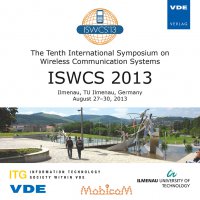A QoE-Driven Adaptation Scheme for Video Content Delivery in LTE Networks
Conference: ISWCS 2013 - The Tenth International Symposium on Wireless Communication Systems
08/27/2013 - 08/30/2013 at Ilmenau, Deutschland
Proceedings: ISWCS 2013
Pages: 5Language: englishTyp: PDF
Personal VDE Members are entitled to a 10% discount on this title
Authors:
Vergados, Dimitrios J.; Jiang, Yuming (Department of Telematics, Norwegian University of Science and Technology, Norway)
Sgora, Aggeliki (VTT Technical Research Centre of Finland, Finland )
Michalas, Angelos (Technological Educational Institute of Western Macedonia, Greece)
Vergados, Dimitrios D. (Department of Informatics, University of Piraeus, Greece)
Laulajainen, J.-P. (VTT Technical Research Centre of Finland, Finland)
Abstract:
The Long-Term Evolution (LTE) standard is a promising solution to mobile connectivity. It provides high data rates at a relatively low cost. At the same time, video traffic has so far outpaced other traffic types in growth, making it the dominant traffic type in current wireless networks. In this paper we study the concept of Quality of Experience (QoE) for video traffic in LTE systems. Since video users are more annoyed by unpredictable disruptions than overall reduced video fidelity, we developed an adaptive video coding scheme that aims to improve QoE in LTE networks. In the proposed model users of the same quality class are classified into a number of service levels providing different QoE satisfaction thresholds to their members. The QoE driven adaptation scheme adapts the rate of the transmitted video, so that the QoE experienced by the users remains in satisfactory levels. Two different policies for transmission rate adaptation are studied, namely the adaptive and the coordinated approach. The level of the transmission rate for both policies is regulated by the linear slow start and/or the exponential increase. Simulation results showed that the proposed algorithm for the both transmission rate adaptation policies succeeds in minimizing packet loss and delay in the video transmission, by adjusting the video resolution.


